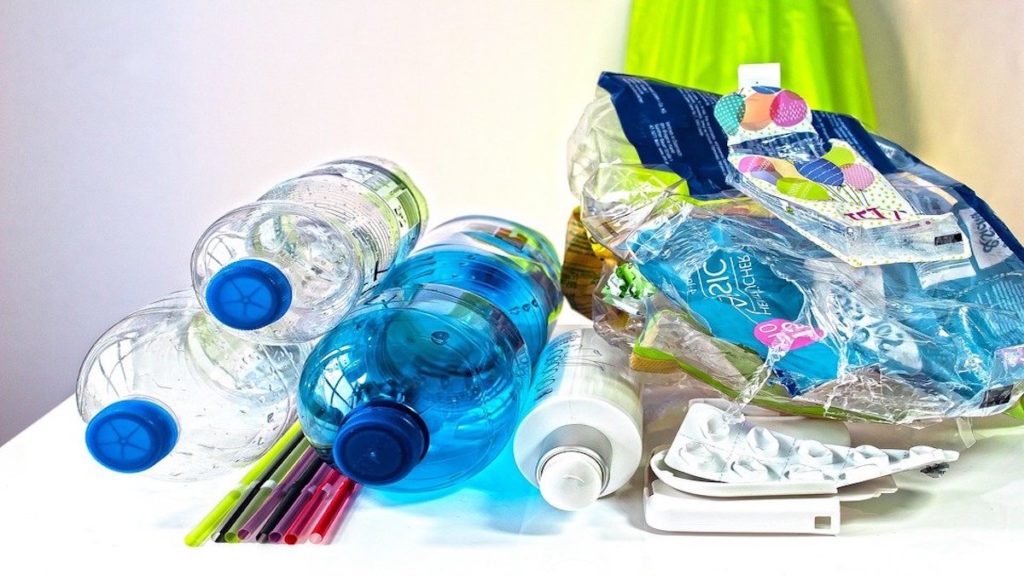Featured image by Stux on Pixabay
You already know what plastic is because we use it many different things in our life. However, how do businesses manufacture it? The process of producing plastic is complicated. Moreover, the complexity varies depending on what the plastic is for. There are many different plastic manufacturing companies that produce different types of plastics like plastic extrusion or just regular plastic for a bag. But, how do you actually create it?
The Production of Plastics
The first step in the production of plastic includes raw oil. Along with that, they also use cellulose, coal, natural gasses, and salt. Raw oil is a mix of many different things, so to be able to use the oil it must be refined at a refinery.
Even though our use of plastics is substantial, only 5% of the worlds consumption of oil is used to create it. The majority of oil is for motors of transportation vehicles. However, one of the downsides of the use of oil for motors is that it only can be used once. While on the other hand, you can reuse the oil used for the production of plastic many times. You can reuse it for many different types of products as well. At the end of its lifecycle facilities can burn it for energy.
RELATED ARTICLE: WHAT IS THE TRUE POWER OF THE PEN?
The Oil Turning into Plastic
It all starts with a distillation process in an oil refinery. They start by separating heavy raw oil into lighter oil products. Nafta is one of these oil products which are very important in the production of plastics. In Denmark we don’t produce plastic, but our neighbor countries like Norway, Sweden, Finland and Germany produce massive amounts.
The plastic is made up of polymers. So, you can produce many different types of polymers which have very different characteristics. For that reason, it is also possible to create many different types of plastic and you have probably already tried and seen many of the different types. There´s the plastic for a bag at the supermarket, the plastic for your garden tools, and the plastic wrapped around your remote control. The fact that it is very cheap and can be used for so many things is also the reason why companies produce large amounts of plastic every year.
RELATED ARTICLE: OFFICE FURNITURE: HOW TO PICK THE BEST PIECES FOR YOUR SPACE
Different Types of Plastic
There are many different types because it’s used in so many different scenarios. However, the six main types of plastics include:
- Polyethylene Terephthalate
- High-Density Polyethylene
- Polyvinyl Chloride
- Low-Density Polyethylene
- Polypropylene
- Polystyrene
The characteristics of plastics can vary based on several different factors. While some plastics are lightweight and strong, others can be lightweight and easy to break. Others can be high-density, heavy, and resistant. These characteristics change depending on what use the plastic will have.
The density and weight of the plastics are different from each type. For example, imagine the difference between the plastic of a plastic bottle compared to the plastic in the interior of a car. They serve many different purposes, although made in a similar way.
Polyethylene is the most common type of plastic in the world. There are three main types which include high-density, low-density, and linear low-density. The difference is mainly in the resistance of the plastic. High-density is, as the name implies, very strong and resistant to chemicals and moisture. For that reason it’s commonly used for cartons, containers, pipes, and building materials.
Other types of plastic may be hard and flexible, while also being resistant to chemicals and moisture. Such plastics could be used for medical bags and tubing, where the plastic has to be resistant to the chemicals that are in the bag or running through the tubes.
RELATED ARTICLE: HOW TO PLAN A SUCCESSFUL EVENT FOR YOUR BUSINESS
The Reputation of Plastic
Plastic does not always have the best reputation. This is due to the fact that it takes many years for nature to decompose plastic and if the plastic ends up in nature then it can have a damaging effect on wildlife and biodiversity. For that reason, single-use plastic products should be minimized.
Plastic products that do not have a tendency to end up in nature can, however, be a very good material for both the environment and the consumer. The reason is that plastic does not take a lot of energy to create and if it can be avoided that it ends up in nature, then there is no problem using the plastic. For example, plastic used in the medical industry is less likely to end up in nature compared to plastic bags that are sold at the supermarket.
RELATED ARTICLE: BEST PACKAGING CHOICE FOR ORIGINAL EQUIPMENT MANUFACTURERS
